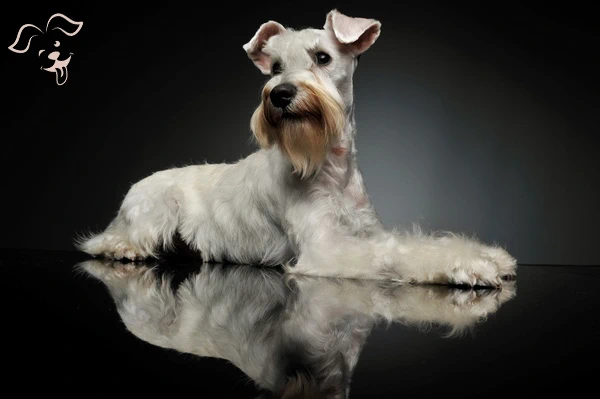CARING WITH FAMILY
|
| The level of affection displayed by a breed towards family members or individuals they are familiar with can vary. Some breeds may exhibit reserve towards everyone except their owner, whereas others treat anyone they know as if they were their closest companion. |
LOVE WITH CHILDREN
Unwise
Good With Children
|
| A breed's capacity for tolerance and patience with children's behavior, as well as its overall family-friendly nature are crucial aspects to consider. Regardless of the breed, it is important to always supervise dogs when they are around young children or children of any age who have limited exposure to dogs. |
BEHAVIOR WITH DOGS
Unwise
Good With Other Dogs
|
| The general friendliness of a breed towards other dogs is an important factor to consider. While all dogs should be supervised during interactions and introductions with other dogs, it is worth noting that certain breeds tend to have a more innate inclination to get along with other dogs, whether it be within the home or in public settings. |
SHEDDING LEVELS & MANAGEMENT
No Shedding
Hair Everywhere
|
| The amount of fur and hair a breed is expected to shed is a significant consideration. Breeds that shed heavily will require more frequent brushing, may potentially trigger specific allergies and will likely necessitate more regular vacuuming and lint-rolling to maintain cleanliness. |
COAT GROOMING STANDARDS
|
| The grooming needs of a breed including bathing, brushing, trimming and other coat maintenance tasks, should be taken into account. It is crucial to consider the time, patience and budget you can allocate for such care when evaluating the grooming effort required. Keep in mind that all breeds will require regular nail trimming as part of their grooming routine. |
DROOLING INTENSITY
Less Likely to Drool
Always Have a Towel
|
| The tendency of a breed to drool is an important factor to consider. If you have a preference for cleanliness and dislike dogs that leave ropes of slobber on your arm or create big wet spots on your clothes, it may be wise to avoid breeds that are prone to excessive drooling. |
COAT STYLES GUIDE |
| Wiry, Silky |
| COAT SPECTRUM |
| Medium |
FRIENDLINESS
Reserved
Everyone Is My Best Friend
|
| The level of welcoming behavior a breed exhibits towards strangers is worth considering. Certain breeds may be reserved or cautious around all strangers, regardless of the setting, while others display a happy and friendly attitude, eagerly welcoming new individuals whenever they are present. |
LIVELINESS
Only When You Want To Play
Non-Stop
|
| The level of enthusiasm a breed exhibits towards play, even beyond puppyhood is an important aspect to consider. Certain breeds maintain a strong desire to engage in activities like tug-of-war or fetch well into their adult years. On the other hand, some breeds are content with spending most of their time relaxing on the couch with you, showing less interest in vigorous play as they mature. |
VIGILANCE INTENSITY
What's Mine Is Yours
Vigilant
|
| The inclination of a breed to alert you of the presence of strangers is an important characteristic to consider. Some breeds are more likely to react and signal potential threats, whether it be the mailman or a squirrel outside the window. These breeds often display a warming response towards strangers who enter the house and are accepted by their family. |
ADAPTATION CAPACITY
Lives For Routine
Highly Adaptable
|
| The adaptability of a breed to handle change is a significant factor to consider. This encompasses the breed's ability to adjust to various changes in living conditions, noise levels, weather conditions, daily schedules and other day-to-day variations. Some breeds demonstrate remarkable ease in adapting to such changes, while others may require more time and support to adjust to new circumstances. |
OBEDIENCE LEVEL
Self-Willed
Eager to Please
|
| The ease of training a dog and the willingness to learn new things are important considerations. It is noteworthy that some breeds have a strong desire to make their owner proud and are generally receptive to training. Conversely, other breeds may exhibit a more independent nature, preferring to do as they please, when they please and wherever they please. |
STAMINA LEVEL
|
| The amount of exercise and mental stimulation a breed requires is an essential factor to consider. High-energy breeds are typically ready and eager for physical activities, spending their time running, jumping and playing throughout the day. They thrive with regular exercise to keep them mentally and physically engaged. On the other hand, low-energy breeds are content with a more relaxed lifestyle often enjoying leisurely activities and being more inclined to lounge and snooze. |
VOCALIZATION
|
| Medium |
LEARNING CURIOSITY LEVEL
Happy to Lounge
Needs a Job or Activity
|
| The amount of mental stimulation a breed requires to stay happy and healthy is an important consideration. Purpose-bred dogs with jobs that involve decision-making, problem-solving, concentration and other mentally engaging tasks have specific needs in terms of mental exercise. Without sufficient mental stimulation, these breeds may resort to creating their own activities to keep their minds occupied and these activities may not align with your preferences. Providing appropriate mental stimulation for these breeds is crucial to prevent behavioral issues and ensure their well-being. |
| COLORS |
|
Description
|
Registration Code
|
|
Black
|
007
|
|
Pepper & Salt
|
139
|
|
| PATTERNS | . |






























FRIENDLINESS
LIVELINESS
VIGILANCE INTENSITY
ADAPTATION CAPACITY